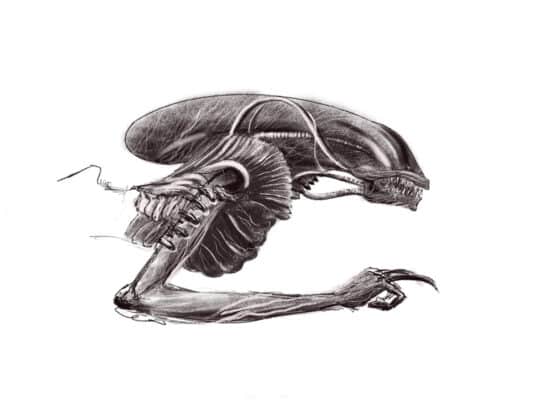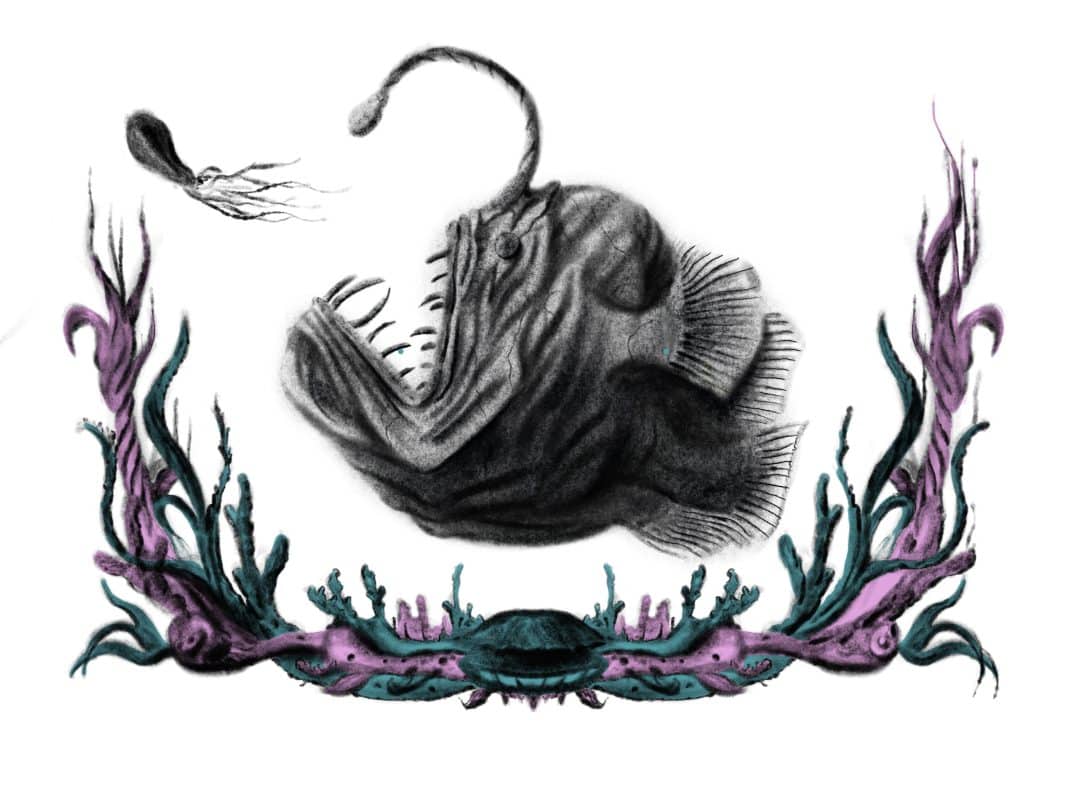
ALIEN OR XENOMORPH: HISTORY, MEANINGS AND SYMBOLS
What is the Alien, or Xenomorph? Let’s find out its story, the meanings and symbols of the scariest predator in the universe. Anyone who has
BLACK FRIDAY 20% – code: BLACK2023 |
Would you like to receive your order by ❤️ VALENTINE’S DAY? Make your purchase by January 25th.
CHRISTMAS CLOSURE🎄- New orders will be processed from 8 January 2023

“If you look long into the abyss, the abyss will also want to look into you.”
(Edgar Allan Poe)
Off our coasts, where the light does not reach, live creatures that are often still unknown. The great fascination of the deep lies precisely in its mystery: we simply do not know it.
The depths of the oceans and seas, after all, are not easily accessible. Even with the latest technology, humans can only gain partial knowledge of the marine world.
Obviously, the deeper you go underwater, the more mysteries there are. Until a couple of centuries ago, it was believed that life ceased beyond a depth of 200 meters. Today we know that this is not the case at all: nature, with its incredible adaptations, has developed extraordinary animals even in the darkness of the oceans.
The absence of light and environmental conditions shaped incredible and eerie beings, a source of inspiration for those who – like me – love the charm and atmosphere of the sea, legends, monsters and bestiaries.
Specifically, abyssal fish are very close to Tim Burton ‘s Gothic creatures illustrated in his books and animated in his films: huge mouths with sharp teeth, giant, cold eyes, and tiny, angular bodies moving abnormal heads.
Soon we will set sail to meet five creatures of the deep that I find particularly interesting because of their “monstrous” appearance and unusual characteristics.
First, however, a few premises.
– The fascination of abyssal fish. There are countless creatures in the deep, but I have chosen some of them-arbitrarily-essentially because of their appearance, or their connection to myths and legends. I am not going to talk about biology, except for very brief mentions, although these are in all cases really existing animals.
– The link to legends. Mythological animals and sea monsters often derive from interpretations or exaggerations of real existing animals. However, this applies to creatures that live close to the surface: abyssal fish, in contrast, almost never get to swim close to humans.
It inhabits waters from 200 to 1,000 meters deep and is a very uniquely shaped predator . Called Goblin Shark, he really looks like something out of Tolkien’s fictional world: small eyes stand behind a very long rostrum. Below this nose, we find very strange protruding jaws filled with sharp teeth.
The goblin shark can either encase its jaws or throw them outward, powerfully changing the shape of its head, on which a kind of toothed beak appears. Another curiosity: the Goblin Shark is a nice pink color because of the superficial capillaries that run under a very delicate skin.
Extremely rare, it inhabits the waters of Japan, Southeast Asia and Oceania.
When I think of abyssal fish, immediately my mind paints the Black Devil. Most interesting are the females, which are much larger than the tiny males: they have a long antenna on top of their heads, ending in a photophore, that is, a sort of lantern.
What is it for? To lure unwary little fish that are then devoured by the voracious Black Devil, equipped with powerful jaws filled with strong, extremely long and sharp teeth.
It is impressive to see in documentaries an attack by the Black Devil: the giant head pops open to kill eating fish three times as big. The melanocete is very small in size: the female usually does not exceed 10 centimeters. They are able to reach incredible depths, reaching the abyssal plains, 4500 meters below the sea surface.
We descend even deeper to find the great mouths of the Pelican Eels. The depth they can reach is impressive: although known specimens are concentrated between 1,500 and 3,000 meters, it appears they can reach 7,000 meters and beyond.
Just like the Black Devil and the best monsters imagined by Tim Burton, the Pelican Eel has a huge mouth mounted on a head that takes up most of its small, serpentine body.
Length? For the few specimens found, its size was believed to be just over half a meter. It was later found that the Pelican Eel can reach two meters, with a half-meter jaws opening.
Not very agile, it captures its prey by ambushes. Like the Black Devil, he attracts small fish and mollusks with light, which in his case is at the end of his tail. Once close, prey is devoured by its huge mouth.
The deep hides the secrets of this majestic animal. Mysterious and extremely rare, it seemed to belong exclusively to the world of legends. In fact, many scientists have doubted the existence of squid of similar size.
One of its distant cousins, the Giant Squid (Architeutis), inspired the myth of the mighty Kraken, spotted by northern sailors with its tentacles (if you want to learn more here the article ‘ Martini Monsters: the Kraken ‘). It is only in the mid-19th century that its existence is attested. The Colossal Squid, a predator of the deep depths of Antarctica, is even larger and more mysterious: it can reach a length of 15 meters and very little is known about it.
Everyone knows that the eight tentacles, equipped with suckers, are used by squid to kill their prey. Less well known, however, is the presence of hooks: sharp and innumerable, they can rotate, going deep into the prey’s flesh when it tries to free itself.
How does he find prey? With the largest eyes in the animal kingdom: nearly 30 centimeters in diameter, to glimpse the silhouettes of prey in the deep darkness of the deep.
I want to close this selection with the Ferocious Saurus, a true monster of the deep. Frightening and violent, this animal has a name that excellently sums up its characteristics: it devours and attacks everything it finds.
Sizable in size (it can reach two meters) it usually lives in the depths of the oceans and seas, but can also reach the surface.
Its appearance is distinctly Gothic: a silvery, slender, almost serpentine body follows a head with toothy jaws and large, expressionless eyes. A very large blue crest rises on the back.
Sharp teeth and luminescent bodies, immense tentacles and sharp hooks are hidden in the darkness of the deepest waters. There you will find as yet unknown animals with their own world and secrets. It is very fascinating to me that there are still unknown and unexplored vastnesses on our planet, with incredible life forms that occasionally jump out at us.
In addition to the creatures I have illustrated here, there are countless others featured in other articles, each with the incredible characteristics that nature has sculpted over the millennia. Inspiration for artists, delight for enthusiasts, and wonder for biologists, the aquatic world is an endless source of wonder, and I sincerely hope that civilization will preserve this treasure with the attention it deserves.

What is the Alien, or Xenomorph? Let’s find out its story, the meanings and symbols of the scariest predator in the universe. Anyone who has

The Ouroboros is an ancient and intriguing symbol that has fascinated cultures and philosophers for centuries. Depicted as a snake or a dragon biting its